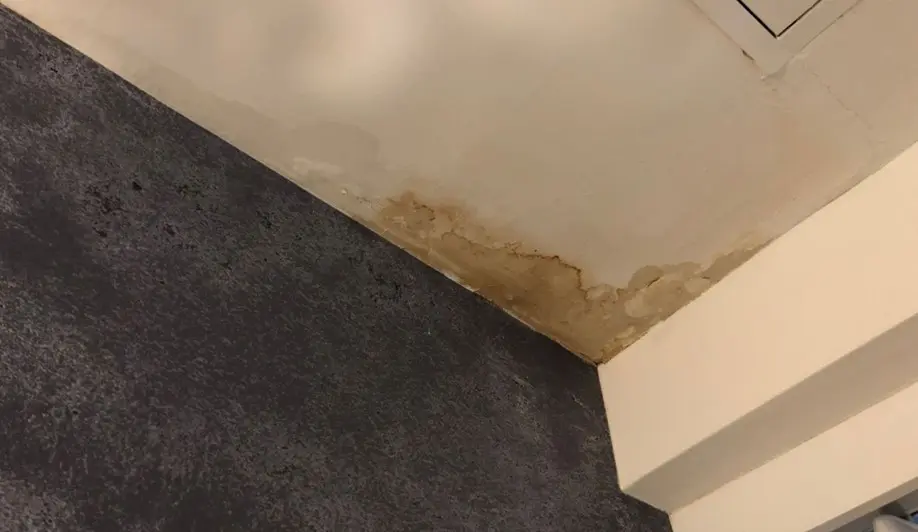Have you ever looked up with horror to see water leaking from your ceiling, leaving you feeling utterly helpless and anxious? You are not alone. Ceiling leaks are one of the most common, yet most panic-inducing, home troubles. Whether caused by a plumbing mishap or a faulty roof, the damage than can result with unattended leaks is tremendous.
In this comprehensive guide, we’ll walk you through everything you need to know about managing a water-dripping ceiling, including who to call and what immediate actions to take. By the end, you’ll be well-prepared to deal with these home emergencies effectively and efficiently.
Understanding Water Leaks in the Ceiling
Causes of Ceiling Water Leaks
Understanding the root cause of a water leak is crucial. Here are some common culprits:
- Roof Damage
- Missing or damaged shingles
- Improperly installed flashing around chimneys and vents
- Ice dams from poor insulation
- Plumbing Issues
- Leaking or burst pipes
- Overflowing bathtubs or sinks
- Faulty seals around bathroom fixtures
- HVAC Systems
- Clogged condensation drains
- Malfunctioning air conditioning units
- Other Potential Causes
- Poor attic insulation leading to condensation
- Blocked gutters causing water overflow
Identifying the Signs of a Water Leak
Before you panic, ensure you accurately identify the signs:
- Visible Stains: Brownish or yellowish spots are typical indicators.
- Dripping Sounds: Unexplainable dripping or running water sounds with no apparent sources.
- Peeling Paint or Sagging: Ceiling material may sag or paint may peel due to moisture absorption.
- Musty Odors: A damp, musty smell can indicate the presence of unwanted moisture.
Immediate Steps to Take When You Notice a Leak
Safety First
- Electrical Hazards: Shut off electricity to the affected area to avoid electrical fires or shocks.
- Protecting Belongings: Quickly move furniture and electronic devices away from the dripping water to prevent damage.
Minimizing Damage
- Contain the Water: Use buckets or tarps under the affected area to collect any dripping water.
- Relieve Ceiling Water Pressure: Carefully puncture the ceiling’s water bubble to control and release built-up water pressure.
Who to Call for Professional Help
When dealing with a water leak in the ceiling, it’s crucial to address the issue promptly to prevent further damage. After identifying the source of the leak, you may need to contact a professional for repairs. If the leak is due to a roofing issue, consider reaching out to a Roofing Contractor Indianapolis. They can assess the situation and provide the necessary repairs to ensure your roof is in top condition. By choosing a local expert, you can benefit from their knowledge of the area’s specific weather conditions and roofing requirements, ensuring a more tailored and effective solution to your problem.
Roofing Contractors
If you’re dealing with a water leak in the ceiling, it’s crucial to address the issue promptly to prevent further damage. While you might be tempted to handle minor leaks yourself, it’s often best to consult a professional to ensure the problem is thoroughly resolved. For those unsure of where to begin, you can start here to explore reliable roofing services that can assess and repair any damage effectively. By taking swift action and seeking expert help, you can protect your home from potential structural issues and maintain its integrity.
- When to Call: If you suspect roof damage.
- What They Do: Inspect for roof leaks, repair roofing damage or replace materials.
Plumbers
- When to Call: Suspected plumbing-related issues.
- Services Offered: Fix leaky pipes, replace faulty plumbing components, seal bathroom fixtures.
HVAC Specialists
- When to Call: If the leak is linked to HVAC systems.
- Inspection and Repair: Routine maintenance and repair of air conditioning and heating systems.
Water Damage Restoration Experts
- When to Call: For extensive water damage assessment.
- Comprehensive Services: Drying, cleaning, mold remediation, and restoring damaged areas.
Selecting the Right Professional
Credentials and Licenses
Before selecting any professional, ensure they have the necessary qualifications:
| Credential | Importance |
| Proper Licensing | Ensures compliance with local regulations |
| Insurance Coverage | Protects from liability in case of accidents |
Read Reviews and Get References
Take time to analyze feedback:
- Consider both positive and negative reviews.
- Ask for references to assess past jobs.
Compare Estimates and Services
When making your decision:
- Cost Considerations: Request quotes from multiple professionals.
- Scope of Work: Ensure understanding of all included services.
Preventative Measures
Regular Maintenance and Inspections
- Schedule periodic checks for roofing, plumbing, and HVAC systems to catch small issues before they escalate.
Gutter Cleaning and Roof Upkeep
- Routine cleaning prevents overflow and backups.
Insulation and Ventilation Improvement
- Enhance your home’s insulation and ventilation to minimize the risk of leaks.
Conclusion
Dealing with water leaking from a ceiling can be particularly stressful, but understanding what steps to take and who to call can make a significant difference in damage control. By being proactive and vigilant about maintenance, you can safeguard your home against future leaks.
If you’re dealing with water dripping from ceiling and need direct assistance, contact a trusted roofing company to assess and remedy the issue swiftly. Remember, a stitch in time saves nine!
Additional Resources
FAQs
- What is the most common cause of ceiling leaks?
- The most common cause is roof damage, particularly from missing or damaged shingles.
- How quickly should I respond to a ceiling leak?
- Immediately. The sooner you address the issue, the less damage and cost you incur.
Addressing a ceiling leak doesn’t have to be daunting. Armed with this guide, you’re equipped to respond effectively and prevent future hassles. Stay dry and stay informed!
Also Read-Building a Sustainable Future: The Role of Modern Home Design
